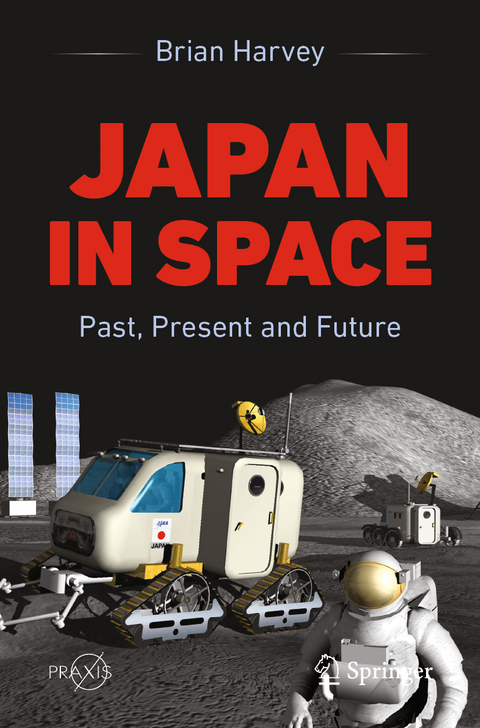
Japan In Space
Springer International Publishing (Verlag)
978-3-031-45571-1 (ISBN)
Now, Japan is one of Asia's leading space powers, alongside China and India, vying for influence in the region. Its solid and liquid-fueled rockets are estimated to be among the most advanced and reliable in the world, its technology among the best. This book examines the history of Japan's space program, the country's current state of development and its future. It describes the extensive infrastructure that has gone into the forging of Japan's picturesque oceanside launch sites, training centers, testing facilities and tracking stations. This book also outlines the politics of space in Japan, financial difficulties, its space industry, the symbiotic relationship with the United States and the recent sharp change-of-course to invest in military satellites.
From the role of influential personalities, such as Hideo Shima and Shinichi Nakasuka, to political leaders, such as Yasuhiro Nakasone and Takeo Kawamura, you will read about how Japan has paved its own star-lit path to space. The future may expect to send Japanese probes to Mercury and the moons of Mars, all while the first Japanese astronauts set foot on our own Moon and drive innovative rovers across its surface.
Brian Harvey has been a writer and broadcaster on spaceflight since the early 1970s. His articles have appeared in Spaceflight, Space Chronicle, Quest, Orbit, Astronomy & Space, Go Taikonauts! and ROOM. He has contributed to radio programs on BBC (Radio 4, Radio 5, World Service, Northern Ireland), Voice of American, Radio Free Europe, Future tense (Australia) and to television and film programs for the Canadian Broadcasting Corporation, Discovery Channel, Danish TV and China CCTV (Dialogue - ideas matter). His first book was a history of the Soviet space program (Ellis Horwood, 1988), with three subsequent editions; followed by histories of Soviet lunar exploration, Soviet planetary exploration, Russian space science, the American Explorer program as well as histories of the European, Japanese and Indian space programs (all published by Praxis, later Praxis/Springer). He has written four histories of China's space program, the most recent also published in Chinese. He contributed chapters to Space Sleuths (Praxis, 2012) and a book on Yuri Galperin, published by the Academy of Sciences in Moscow (2012).
Chapter 1 - Origins - the legacy of Hideo Itokawa.- Chapter 2. Space science.- Chapter 3. Technology, society and economy.- Chapter 4. Deep space.- Chapter 5. Human spaceflight.- Chapter 6. Change of direction.- Chapter 7. Infrastructure and organization.- Chapter 8. Future.- Chapter 9. Conclusion: Japan in comparative Asian and global perspective.
"Harvey's book is highly illustrated: 189 in color and 20 in black and white. From start to finish, this is a really solid space book. It's perfect for readers, especially those in the West, who want to know what Japan has done and will do in space." (Casey Suire, National Space Society, nss.org, March 24, 2024)
| Erscheinungsdatum | 18.11.2023 |
|---|---|
| Reihe/Serie | Space Exploration | Springer Praxis Books |
| Zusatzinfo | XXVII, 421 p. 209 illus., 189 illus. in color. |
| Verlagsort | Cham |
| Sprache | englisch |
| Maße | 155 x 235 mm |
| Gewicht | 761 g |
| Themenwelt | Sachbuch/Ratgeber ► Natur / Technik ► Weltraum / Astronomie |
| Naturwissenschaften ► Physik / Astronomie ► Astronomie / Astrophysik | |
| Schlagworte | Asian Space Race • Asteroid Itokawa and Hayabusa • Bepi Columbo Orbiter • Hideo Itokawa • Hiten and Hagoromo Moon Probes • JAXA • Kagoshima Launch Site History • Kaguya Lunar Science • NASDA • Spacelab J • Tanegashima Launch Site History |
| ISBN-10 | 3-031-45571-1 / 3031455711 |
| ISBN-13 | 978-3-031-45571-1 / 9783031455711 |
| Zustand | Neuware |
| Haben Sie eine Frage zum Produkt? |
aus dem Bereich


